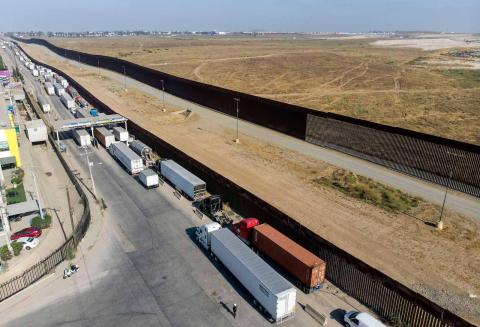I am embarrassed to say that I made a mistake in the analysis below (I should have realised the results were too clear to be true!). In fact, the relative price of investment goods follows the pattern in the graph below.
This mistake was discovered by Guonan Ma and staff at the RBA, who tried to replicate this analysis. Replication is valuable. We should see more of it across the profession, and it should be rewarded more. See this blog post from the World Bank, which shows that the current state of empirical work is not acceptable.
In any case, the behaviour of Chinese investment prices is still interesting. While they have behaved like Japanese and Korean prices for the past 20-odd years, they look different from when the Korean and Japanese economies were rapidly industrialising. So the high share of investment in GDP in China still may be influenced by prices, it is just that the story is not as convincing as I first thought.
Early last week, China's GDP data for 2014 was released. Many of the headlines focused on overall growth, but I want to focus on investment, and specifically on why the Chinese devote so much of their GDP to investment. I'm going to argue that the high cost of investment in China accounts for at least some of this 'imbalance'.
First, the facts. For some time now, the share of ChineseGDP devoted to investment has been high (see graph below). In fact, it has been in the high 40s as a percentage of GDP, which is basically a world record. Most developed countries have a share in the 20%-30% range.
 This high level of investment is the source of a lot of angst.
This high level of investment is the source of a lot of angst.
Commentators are concerned that this investment is wasted (we've all heard the stories about ghost cities). The importance of debt financing has added to the hand-wringing, and there are genuine fears the situation will end up pear-shaped. [fold]

 So what? Below I show the first two lines I plotted – investment share of GDP and the relative price of investment – on the same graph. The correlation is striking. And I am not talking about the trend. It's very easy to get trends to be correlated! No, I'm talking about the wiggles away from the trend, which line up very well. So when the price of investment goes up, its share of GDP goes up, and this seems to help explain why the share of investment in GDP has increased.
So what? Below I show the first two lines I plotted – investment share of GDP and the relative price of investment – on the same graph. The correlation is striking. And I am not talking about the trend. It's very easy to get trends to be correlated! No, I'm talking about the wiggles away from the trend, which line up very well. So when the price of investment goes up, its share of GDP goes up, and this seems to help explain why the share of investment in GDP has increased.
 Let's think about this a little deeper.
Let's think about this a little deeper.
Total expenditure on investment is price times quantity. If price increases, it is not mathematically necessary that total expenditure increases – quantities may fall. What the above graph suggests is that quantities do not fall that much in China. In fact, if we were to assume that quantity is unresponsive to price, then price changes would account for 10 percentage points of the shift in the red line. That's nearly all of it.
But in other countries, it looks like investment is responsive to price. Below I show the same prices/shares graph for Australia. It is difficult to see a strong correlation between the two lines, suggesting that the quantity of investment is responsive to price, and overall expenditure is little changed. Gazing into the crystal ball, I can't help but think that if I am right about the relationship between prices and the investment share in China, then the falls in commodity prices will help rebalance the economy. All those buildings, tunnels, and bridges will become less expensive, and thus account for less expenditure.
Gazing into the crystal ball, I can't help but think that if I am right about the relationship between prices and the investment share in China, then the falls in commodity prices will help rebalance the economy. All those buildings, tunnels, and bridges will become less expensive, and thus account for less expenditure.
*The investment price deflator is available in most countries' national accounts. Unfortunately China does not provide an investment price deflator, but we can back it out at an annual frequency. (For the wonks: China provides the investment contribution to real GDP growth, and we know that real Chinese GDP is calculated using a Laspeyres index, with 1980, 1990, 2000, 2005 and 2010 used as base years. Using this information, we can calculate the investment deflator)
